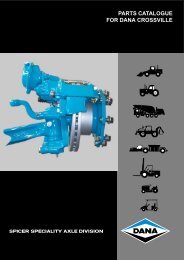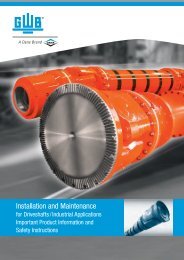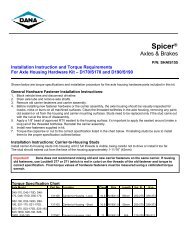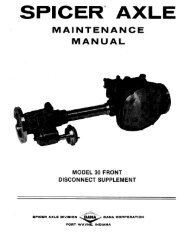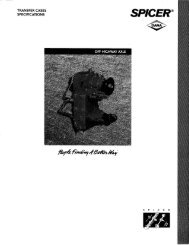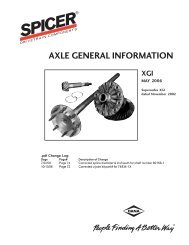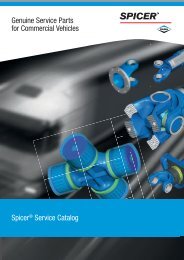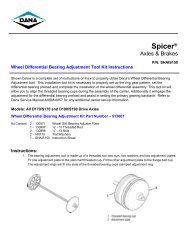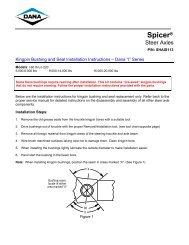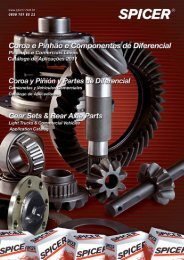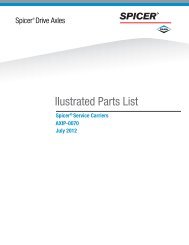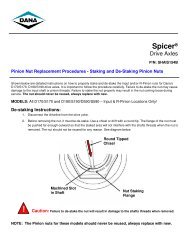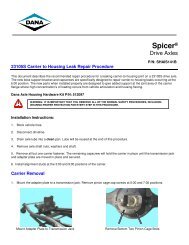Single Reduction & Single Reduction with Differential Lock - Spicer
Single Reduction & Single Reduction with Differential Lock - Spicer
Single Reduction & Single Reduction with Differential Lock - Spicer
You also want an ePaper? Increase the reach of your titles
YUMPU automatically turns print PDFs into web optimized ePapers that Google loves.
Pinion Assembly<br />
Adjust Pinion Bearing Preload - (Trial Buildup)<br />
1. Assemble pinion bearing cage, bearings, spacer and<br />
spacer washer (<strong>with</strong>out drive pinion or oil seal). Center<br />
bearing spacer between two bearing cones.<br />
Lubricate bearing cups and cones.<br />
Note: When new gear set or pinion bearings are used, select<br />
nominal size spacer from the specification chart below.<br />
If original parts are used, use spacer removed during<br />
disassembly.<br />
1<br />
Bearing<br />
Cup<br />
1 - Press ram<br />
2 - Sleeve must apply pressure to<br />
back face of outer bearing cone<br />
3 - Spring scale<br />
Washer<br />
Cage<br />
2. With the bearings well lubricated, place the assembly<br />
in the press. Position sleeve so load is applied<br />
directly to the back-face of the outer bearing cone.<br />
2<br />
Cup<br />
Cone<br />
3<br />
3. Rotate pinion cage while applying press load to the<br />
assembly and check rolling torque. Wrap soft wire<br />
around the bearing cage, attach spring scale and<br />
pull. Preload is correct when torque required to<br />
rotate the pinion bearing cage is <strong>with</strong>in the specifications<br />
listed in the chart below.<br />
CAUTION<br />
Read only the torque value after the bearing cage starts to<br />
rotate.<br />
4. If necessary, adjust pinion bearing preload by changing<br />
the pinion bearing spacer. A thicker spacer will<br />
decrease preload. A thinner spacer will increase preload.<br />
Note: Once correct bearing preload has been established,<br />
note the spacer size used. Select a spacer .001" larger<br />
for use in the final pinion bearing cage assembly. The<br />
larger spacer compensates for slight “growth” in the<br />
bearings which occurs when they are pressed on the<br />
pinion shank.<br />
CAUTION<br />
Do not assume that all assemblies will retain proper preload<br />
once bearings are pressed on pinion shank. FINAL<br />
PRELOAD TEST MUST BE MADE IN EVERY CASE.<br />
18<br />
Service Procedure



